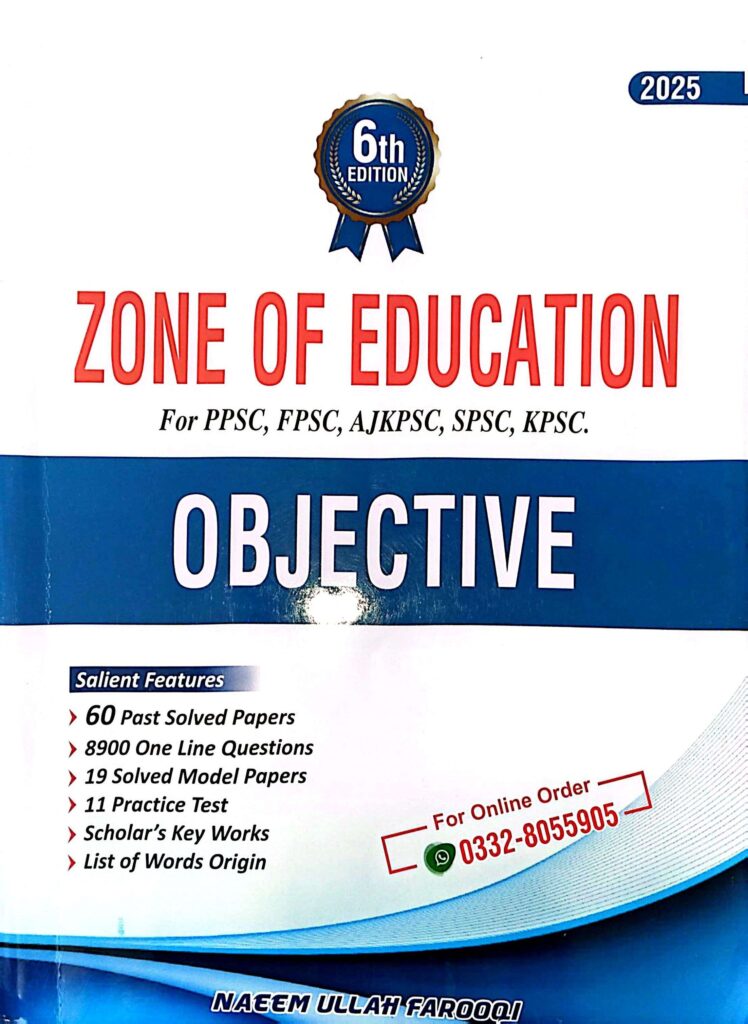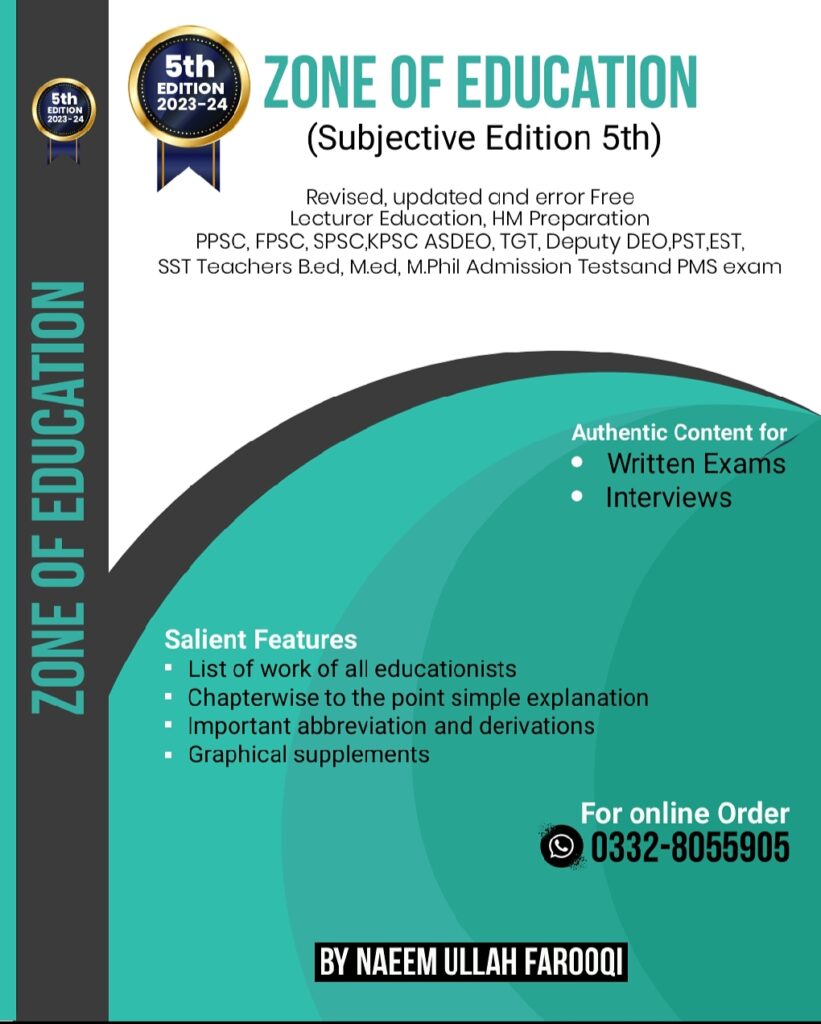Adminitration and Management in Education
91. This type of leader lets subordinates know what is expected of them by setting performance standards.
A. Supportive
B. Participative
C. Directive
D. Achievement-oriented
Ans: C. Directive
92. According to Fayol, administrative behaviour consists of:
A. Planning, organizing, leading, controlling
B. Planning, organizing, leading, controlling, commanding
C. Planning, organizing, coordinating, controlling, commanding
D. Planning, organizing, coordinating, controlling
Ans: C. Planning, organizing, coordinating, controlling, commanding
93. Who coined the new term “POSDCORB”?
A. Luther Gulick
B. Henry Fayol
C. W. Taylor
D. Cooke
Ans: A. Luther Gulick
Explanation: POSDCORB stands for Planning, Organizing, Staffing, Directing, Coordinating, Reporting, and Budgeting, formulated by Luther Gulick and Lyndall Urwick in 1937.
94. To the administrative managers, the basic principle of organization was the:
A. Chain of command
B. Division of labour
C. Span of control
D. Homogeneity
Ans: B. Division of labour
95. The number of workers supervised directly is a definition of:
A. Chain of command
B. Division of labour
C. Span of control
D. Homogeneity
Ans: C. Span of control
96. __________ is information about the system that enables the organization to correct itself.
A. Feedback
B. Opinion
C. Census
D. None
Ans: A. Feedback
97. The process by which a group of regulators acts to maintain a steady state among the system components is called:
A. Homogenises
B. Homeostasis
C. Equilibrium
D. None
Ans: B. Homeostasis
98. Chester Barnard was one of the first proponents of:
A. Open system
B. Closed system
C. Social system
D. Natural system
Ans: A. Open system
99. Herbert Simon used the concept of organizational __________ as a focal point for a formal theory of work motivation.
A. Homogenises
B. Homeostasis
C. Equilibrium
D. None
Ans: C. Equilibrium
100. The school organization as we know it today can accurately be described as a highly developed bureaucracy concluded by:
A. Max Abbot
B. Hoy
C. Kolesar
D. Caracheo
Ans: A. Max Abbot
101. SOI stands for:
A. Social organization inventory
B. School organization inventory
C. Structural organization inventory
D. Statistics of income
Ans: B. School organization inventory
102. Studies indicate that there are two relatively distinct patterns of:
A. Social organization
B. Natural organization
C. Rational organization
D. Structural organization
Ans: C. Rational organization
103. Disciplined compliance to the rules, regulations, and directives is the basic principle of:
A. Power
B. Organization
C. School
D. Operation
Ans: D. Operation
104. Substantial decision making is delegated to the professional staff in:
A. Weberian structure
B. Authoritarian structure
C. Professional structure
D. Chaotic structure
Ans: C. Professional structure
105. Low degree of bureaucratization and professionalization is the main feature of:
A. Weberian structure
B. Authoritarian structure
C. Professional structure
D. Chaotic structure
Ans: D. Chaotic structure
106. Authoritarian structures are __________ in nature.
A. Mechanistic
B. Naturalistic
C. Materialistic
D. Humanistic
Ans: A. Mechanistic
107. It is a set of procedures that help employees deal more effectively within an inevitable environment.
A. Enabling formalization
B. Coercive formalization
C. Enabling centralization
D. Hindering centralization
Ans: A. Enabling formalization
108. One goal of all school administrators should be to make their school:
A. Mindful organization
B. Mindful institute
C. Open structure
D. Closed structure
Ans: A. Mindful organization
109. The notion of mindfulness to organizations, as they studied high-reliability organizations, was first introduced by:
A. Wildavsky
B. Hoy
C. Sutcliffe
D. Sweetland
Ans: C. Sutcliffe
110. It sees problems as opportunities and views successes as problems; it is both optimistic and skeptical.
A. Enabling
B. Mindlessness
C. Mindfulness
D. Hindering
Ans: C. Mindfulness
111. __________ offer a possible solution as they interpret formalization as an organizational technology and identify two types of formalizations.
A. Adler and Borys
B. Damanpour and Craig
C. Michaels and Senatra
D. Hoy and Sweetland
Ans: A. Adler and Borys
112. It seems wrong-headed at first, but it is not. It comes under:
A. Committed and resilience
B. Deferring to expertise
C. Focus on failure
D. Reluctant to accept simplification
Ans: C. Focus on failure
113. Mindful schools match expertise with problems and encourage a fluid decision-making system by:
A. Committed and resilience
B. Deferring to expertise
C. Focus on failure
D. Reluctant to accept simplification
Ans: B. Deferring to expertise
114. Beliefs, symbols, ideologies, behaviours, assumptions, and feelings are components that make a unique system of:
A. Organizational environment
B. Organizational culture
C. Organizational environment and culture
D. Organizational system
Ans: B. Organizational culture
115. When organization members interact and share their feelings with each other, they use some common terminologies and ceremonies which are altogether referred to as:
A. Dominant values
B. Feelings
C. Norms
D. Observed behaviour regularities
Ans: C. Norms
116. All of the following are examples of administrative processes except:
A. Communication
B. Leadership
C. Motivation
D. Rewarding
Ans: D. Rewarding
117. The socialization process starts from:
A. Adherence to values
B. Job mastery
C. Reward and control
D. Selection of entry-level candidates
Ans: D. Selection of entry-level candidates
118. An example of triggering events is:
A. A surplus of change
B. Environmental calamities
C. Minimum coupling
D. Pressure by stakeholders
Ans: B. Environmental calamities
119. __________ sometimes leads to agents engaging in cultural visioning as part of the change cycle.
A. First
B. Third
C. Fifth
D. Eighth
Ans: C. Fifth
120. The step involved in anticipation of the future is cultural:
A. Visioning
B. Change action plan
C. Change strategy
D. Formulation of values
Ans: A. Visioning
JOIN ZONE OF EDUCATIONPK!
Discover the most comprehensive and reliable pedagogy resources in Pakistan, curated for competitive exam success. Our content covers all competitive exam MCQs, including PPSC, FPSC, AJKPSC, SPSC, and more. Designed to empower learners with top-notch material and insights, trust us for your preparation journey!


